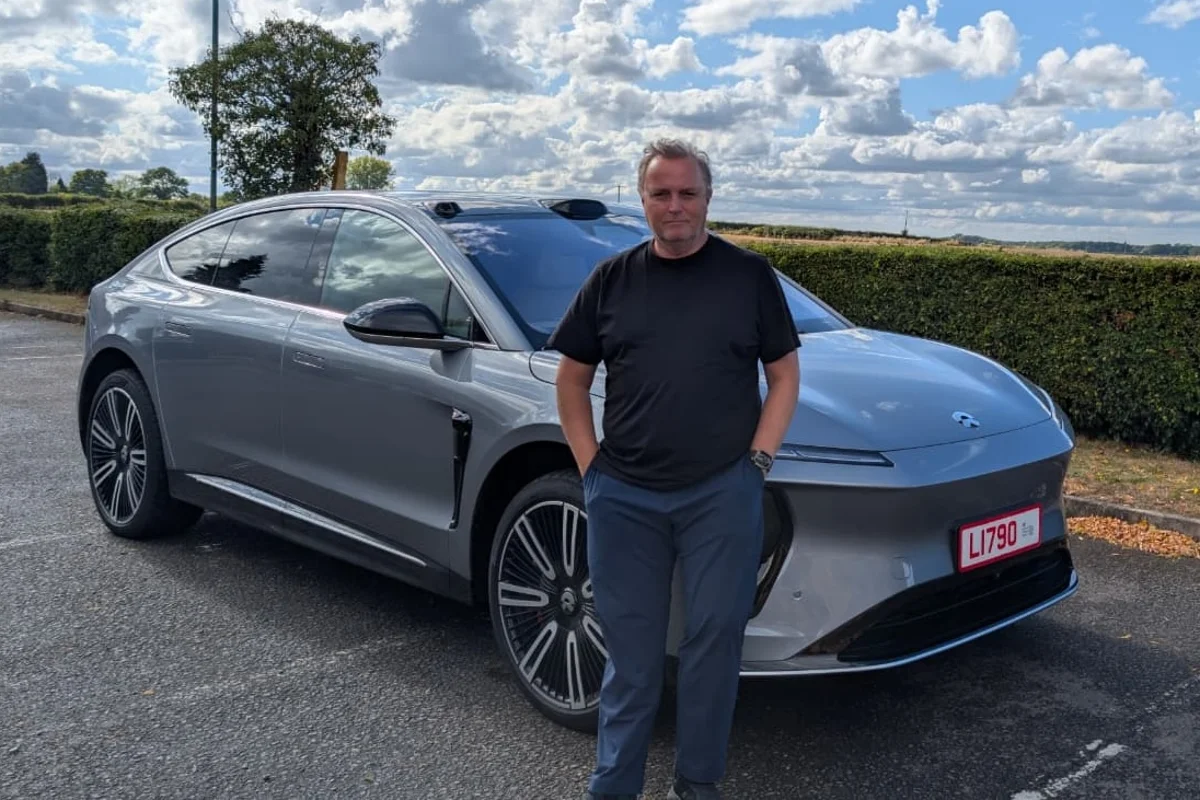Copyright independent

Potholes. They’re the bane of many British motorists, and expensive, too. An average repair for anything more serious than a puncture costs £460 according to the RAC, with the breakdown organisation estimating that there are around six potholes per mile on council-controlled roads in England and Wales. There’s even a National Pothole Day – 15 January, if you really want to know. Our love of sporty-looking cars with big wheels and low-profile tyres doesn’t help matters, with the lumps and bumps on British roads making driving a more jarring (literally) experience than ever. But what if I told you that you could have a car that just skips over potholes and genuinely gives you that magic carpet ride that so many car companies claim they offer, but none actually deliver? Let me introduce you to the Nio ET9 – a Chinese-built car with a very British flavour – and I was invited to Warwickshire to drive it on some pretty ropey roads near the MIRA Technology Park, where a company called ClearMotion, a partner of Nio, has its UK base. Nio is the Chinese car company that has impressed me most since I first met its founder, William Li, a few years back. Li is like a Chinese version of Elon Musk, an engaging entrepreneur, but without the baggage. I met Li for the first time at a Chinese motor show where he was being followed by such huge crowds of fans I thought Taylor Swift was in town. Not only is Li an impressive guy, but Nio does things differently. Firstly, the cars are great – so much so that I was part of the judging team that voted the Nio ET7 the winner of Germany’s prestigious Golden Steering Wheel award in 2022. The cars are designed by American Kris Tomasson and have a distinctive look. They feature a cute digital assistant called Nomi who can take your feedback and send it directly back to HQ – and Nio genuinely acts on that feedback. The company also engages with its community with Nio Houses in major cities that are there for community use as much as sales, while owners man the stands at motor shows, and Nio cars use clever battery swap technology that means you can get a full battery and be on your way again in a few minutes. Nio also has an engineering base in Oxfordshire, with the team there giving their cars a real European feel. And there’s a strong chance that Nio tech could find its way into McLaren’s new range of cars sometime soon – McLaren boss Nick Collins is on the board of Nio, with McLaren’s Abu Dhabi owners CYVN having a share in the Chinese company, too. Back to potholes – and they’re not hard to find, are they, especially in Warwickshire. The Nio ET9 is the brand’s new flagship model, a big crossover with the very latest of Nio’s advanced tech on board. It’s spacious, as you’d expect, beautifully built, fast and a fabulous thing to drive or be driven in. Part of its appeal, though, is its amazing ability to glide over potholes and reduce much of the movement you get in a car over various surfaces – and we do have a wide variety of surfaces here in the UK. You know what it’s like when you’re behind the wheel and following a car over a bumpy or undulating road, watching the movement of the car in front giving you a clue what will happen when you get to that part of the road in a few moments. That happens in the ET9, but when you get to the bump, the car stays flat – there’s no bump, no jerk, no head toss. It’s an eerie feeling, but one you soon get used to – and you soon grow to love. Similarly, you see a pothole ahead, you see the car ahead crash into it with the associated body movement (and you can almost hear the driver wincing), then you glide over it with barely a shiver. You’ll know that there’s an imperfection on the road surface, but you won’t feel it anything like the way that you’d expect. If you’ve ever experienced noise-cancelling headphones, the ET9s suspension does a similar job – you still know what’s happening outside, but it’s a much more comfortable experience and allows you to focus on what really matters. I ended up driving the ET9 looking for potholes, odd undulations, drain covers, cats’ eyes, anything that you might normally want to avoid. And the ease with which the ET9 dismissed them was incredible – I’ve never experienced anything quite like it. In fact, when we returned to MIRA, home to its famous automotive test track, I insisted that we search for some of the unusual and innovative surfaces used to test some of the world’s greatest cars. Across the pavé section that would normally have you jiggle around like a jelly on a plate, I could’ve been sitting in the back sipping a glass of something and not worried about spilling a drop. It was the same on corrugated surfaces and across the long-wave pitching sinusoidal bumps – the ET9 was completely unmoved. We also did some faster work – braking hard and accelerating quickly when the nose of the car would normally dive down as you slow and rise as you speed up. Yup, nothing. And I’ve even seen the ET9 drive over a selection of alternating, single-side speed bumps carrying a tower of full champagne glasses on the bonnet, and it didn’t spill a drop – impressive stuff. When I got back into my reasonably-riding BMW iX to drive home, it felt so different – and so bumpy. So, how does all this clever suspension tech work? On my visit to ClearMotion, Harry Schneider, the company’s manager of vehicle performance, brilliantly explained the physics behind the system, which I’ll try to summarise here without the use of a PowerPoint presentation. Most cars have passive suspension that basically puts springs and dampers in between the road and you in the car to lessen what might be on the road surface – some do that reasonably successfully, many less so. You can also currently buy cars with semi-active suspension systems that react to the road’s surface and adjust, but it’s a case of reacting after the event. Active systems, like ClearMotion’s, push and pull the wheels for even greater control. There are sensors in each wheel that react in milliseconds to what’s happening on the road surface, and they send messages to actuators in the suspension that counteract the effect before a driver even realises. Schneider referred to it as a ‘sky hook’, with the car focusing on the horizon while the ClearMotion tech keeps the car’s body straight and level. It doesn’t stop there, though. Our test route is one that Schneider has driven a few times before, and the ET9 I’m driving also has ClearMotion’s latest RoadMotion technology. This maps the road surface using GPS to further inform the car’s active suspension of what’s coming up, constantly updating and potentially sharing the information with other users in ClearMotion-equipped cars on the same road. So, my ET9 knew what to expect, right down to the nearest centimetre, to pre-arm the suspension of the road surface ahead. Of course, as with any new tech, ClearMotion’s work with Nio is currently limited to the range-topping ET9, although that’s bound to be extended to other, cheaper models over time. And as with any tech company, ClearMotion doesn’t have an exclusive relationship with Nio – it teases Porsche as a partner on its website. As for Nio, its cars are currently available in some European markets, but there’s still no confirmation of the cars going on sale in the UK. They’d go down a storm over here with a real point of difference compared with some of the existing and newly arrived premium brands. What Nio also has is its entry-level Firefly brand with one of the cutest small, supermini-sized EVs that you’ll ever see coming to the UK next year, while its mid-range Onvo brand is also scheduled to go on sale here. If those cars help to democratise the incredible tech that ClearMotion has developed to overcome our pothole problem, that will be even better. But maybe what would be better still would be if somebody actually fixed the potholes in the first place.



